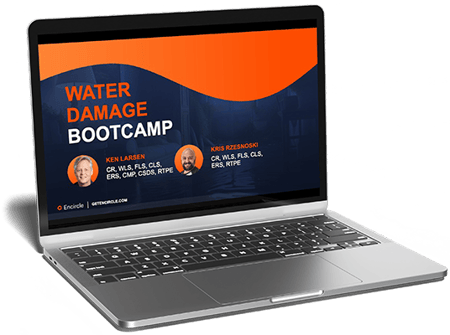Whenever you respond to a home with water damage, one of the most important tasks that you will complete during your preliminary inspection is how you categorize the level of water contamination. How you categorize the level of water contamination establishes how you will mitigate the loss. It determines what materials you should remove and dispose of, and what materials can be decontaminated, cleaned and dried.
Check out our helpful tips below to see what the different categories of water are and how to categorize them.
The different categories of water
There are three different categories of water that will impact your mitigation strategy. Take a look at the tip sheet below for definitions and examples of the different categories. There is a special category for regulated hazardous materials and mold.
Properly categorizing water is the most important step in the water loss restoration effort. How you categorize the level of water contamination establishes how you will mitigate the loss.
 CATEGORY 1
CATEGORY 1
Sanitary water. Does not pose a risk to health. Examples: broken water supply lines, tub/sink overflows, melting snow and ice, falling rainwater, and appliance malfunctions involving water-supply lines.
 CATEGORY 2
CATEGORY 2
Significant contamination. No longer sanitary. Poses a risk to health. Examples: overflows from toilet bowls, broken water beds and aquariums, and discharge from dishwashers or washing machines.
Category 2 can become Category 3 depending upon the length of time and the temperature.
 CATEGORY 3
CATEGORY 3
Grossly contaminated. Can be pathogenic. Examples: sewage, wasteline backflows, flooding from streams, rivers, seawater, and water from weather related events.
 REGULATED HAZARDOUS MATERIALS AND MOLD
REGULATED HAZARDOUS MATERIALS AND MOLD
Comply with local laws. May need a Specialized Expert to assess damages. Posing potential or recognized health risk. Examples: chemical spills, oil spills, solvents, asbestos, mercury, lead, fuels, and molds.
Source: ANSI/IICRC S500: Standard and Reference Guide for Professional Water Damage Restoration (Fifth Edition 2021), Institute of Inspection Cleaning and Restoration Certification.
Download the Different Categories of Water Tip Sheet!
Tips: How to properly categorizing the water
Before mitigation can begin, you need to determine what the source of the water intrusion is and categorize the level of risk to human health to the occupants and workers. Follow the steps outlined in the tip sheet below to learn how to properly categorize water losses every time.
Categorizing the level of water contamination can be challenging. Here are a few tips to ensure that you properly categorize water losses every time.
 1. Training and S500 Standard
1. Training and S500 Standard
Invest in proper IICRC training and be familiar with the S500 standard.
 2. Conduct a thorough inspection
2. Conduct a thorough inspection
Investigate the structure to locate the source of the water. Look for any potential material damages or contaminants. May require invasive disassembly.
 3. Document the water source
3. Document the water source
Thoroughly document the source of water contamination. Ensure the source of water has been contained or repaired.
 4. Consult with an Indoor Environmental Professional (IEP)
4. Consult with an Indoor Environmental Professional (IEP)
Engage an IEP or other Specialized Expert if you require help categorizing the level of contamination.
Source: ANSI/IICRC S500: Standard and Reference Guide for Professional Water Damage Restoration (Fifth Edition 2021), Institute of Inspection Cleaning and Restoration Certification.
Download the How to Properly Categorize Water Tip Sheet
Trusted by restorers around the world
Encircle is the leading all-in-one field documentation tool that helps restorers easily document cause of loss, resulting damages, and pre-existing conditions. Discover how we make documenting water jobs easy. Request a demo today!
Water Damage Restoration Bootcamp
4 IICRC CREDITS
Break down the complexities of restorative
drying with practical knowledge from experts.
Gain confidence, dry buildings, document
your work and get paid.

 By: The Encircle Team
By: The Encircle Team
